Key takeaways:
- The Internet of Things (IoT) significantly enhances energy efficiency by using real-time data to optimize energy consumption in homes and businesses.
- Case studies reveal notable energy savings, such as a 20% reduction in costs at a manufacturing plant and 30% savings in smart buildings through IoT integration.
- Key implementation steps include conducting energy audits, integrating smart devices, and continuous monitoring to foster a culture of energy efficiency.
- Challenges like cybersecurity, device interoperability, and workforce training must be addressed for successful IoT adoption in energy efficiency initiatives.
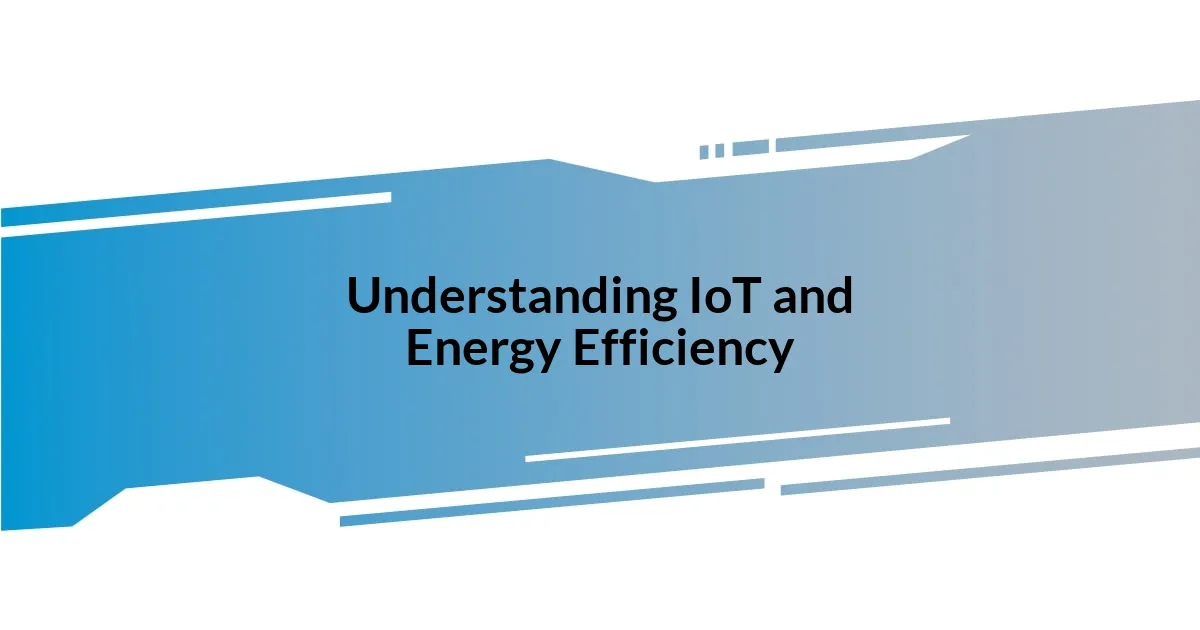
Understanding IoT and Energy Efficiency
Imagine walking into a room where the lights automatically adjust to your presence and the thermostat learns your preferences over time. That’s the kind of intelligence the Internet of Things (IoT) brings to energy efficiency. It’s not just about technology—it’s about creating environments that respond to our needs, sometimes in ways we might not even notice at first.
I remember when I first set up smart plugs in my home; I was amazed at how monitoring my energy usage shifted my mindset. Suddenly, saving energy wasn’t just an abstract concept; it became a tangible goal with immediate feedback. It’s fascinating how IoT can transform our habits, pushing us to be more conscious about energy consumption and encouraging positive changes in our daily lives.
But what does it mean for the broader picture? With real-time data from connected devices, businesses can pinpoint energy waste and optimize usage. Have you ever thought about how that can lead to significant cost savings and reduced environmental impact? It’s an exciting time to consider how our interconnected world can lead to a future where energy efficiency is seamlessly integrated into our lifestyles.
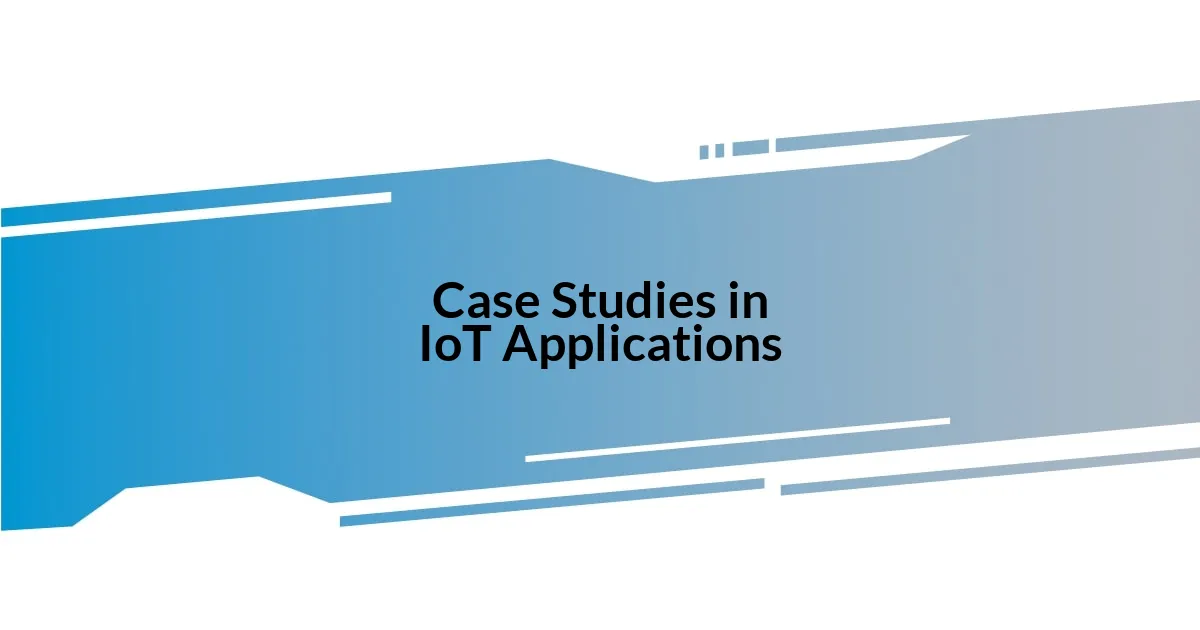
Case Studies in IoT Applications
One compelling case study that I often think about is how a large manufacturing plant implemented IoT sensors to monitor and manage their energy consumption. The results were striking: over a few months, they tweaked their machinery’s operations based on real-time data, which led to a 20% reduction in energy costs. It’s incredible to see how such technology can transform a traditional industry into a more efficient operation while also contributing to sustainability.
- Smart Buildings: A commercial office used IoT-enabled lighting and HVAC systems, realizing 30% energy savings simply by adjusting settings based on occupancy and usage patterns.
- Agriculture: A farm equipped with soil moisture sensors optimized irrigation, cutting water usage by 25% while improving crop yields, thanks to timely data on plant needs.
- Smart Grids: A city revamped its electrical grid with IoT solutions, reducing outages by 40% and improving energy distribution efficiency to accommodate renewable sources.
Thinking about these examples, I can’t help but feel a blend of excitement and hope. They showcase how IoT applications are not merely technical advancements but pivotal shifts towards a sustainable future. The potential to harness data for immediate and lasting improvements in energy efficiency is something I find genuinely inspiring.
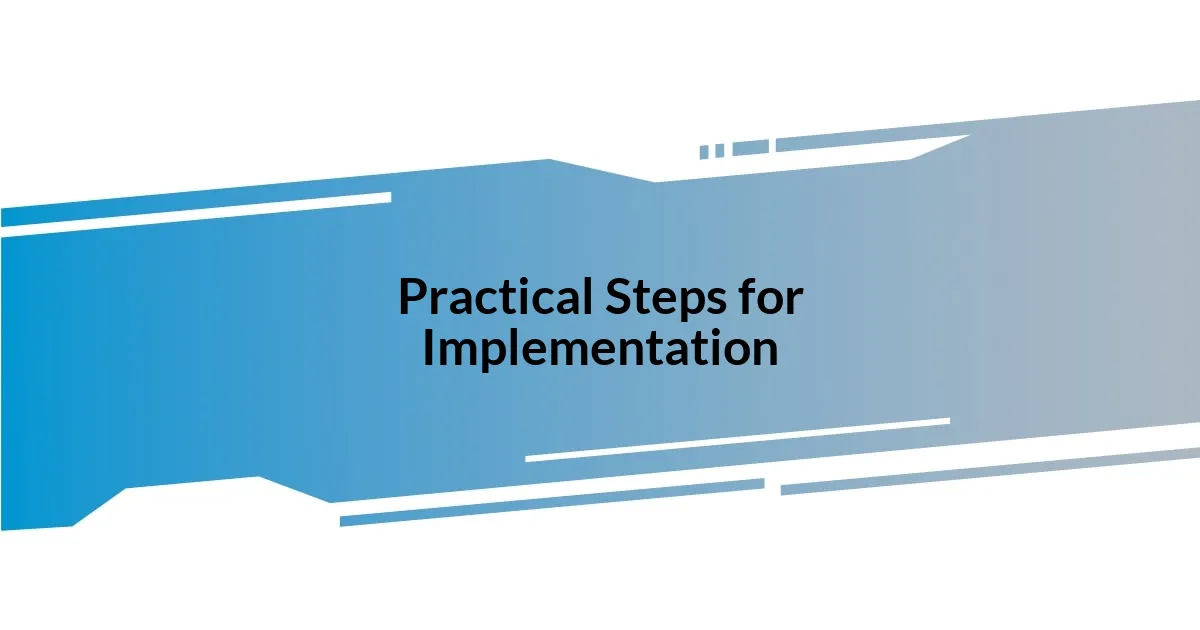
Practical Steps for Implementation
Implementing IoT for energy efficiency begins with assessing current energy consumption patterns. I like to recommend conducting an energy audit, where you can identify the main culprits of energy wastage. It’s surprising how, just a few years ago, I transformed my own space by simply tracking my usage; I realized the old fridge was a significant energy drain, leading me to opt for a smart model that not only saved energy but provided valuable insights.
Next, integrating smart devices is crucial. Start with small changes, like smart thermostats or energy-monitoring plugs. I vividly remember the rush I felt the first time I received a notification that my air conditioner was running longer than needed. It prompted me to adjust the settings remotely. That feeling of control and the immediate potential for savings were incredibly empowering. Once you’re comfortable, scale up to more comprehensive systems that connect multiple devices, creating a cohesive approach to managing your energy use.
Finally, focus on continuous monitoring and adjustment. Keep analyzing the real-time data from your IoT devices to make informed decisions. It’s this iterative process that fosters a culture of energy efficiency. I often reflect on how, in the beginning, my energy savings felt like small victories—each adjustment fueled my motivation to keep looking for new ways to improve. This ongoing engagement is what truly maximizes the impact of your IoT investment.
| Step | Description |
|---|---|
| Energy Audit | Identify energy consumption patterns and major sources of waste. |
| Device Integration | Start small with devices like smart plugs; scale to interconnected systems. |
| Continuous Monitoring | Regularly track data for ongoing adjustments and improvements. |
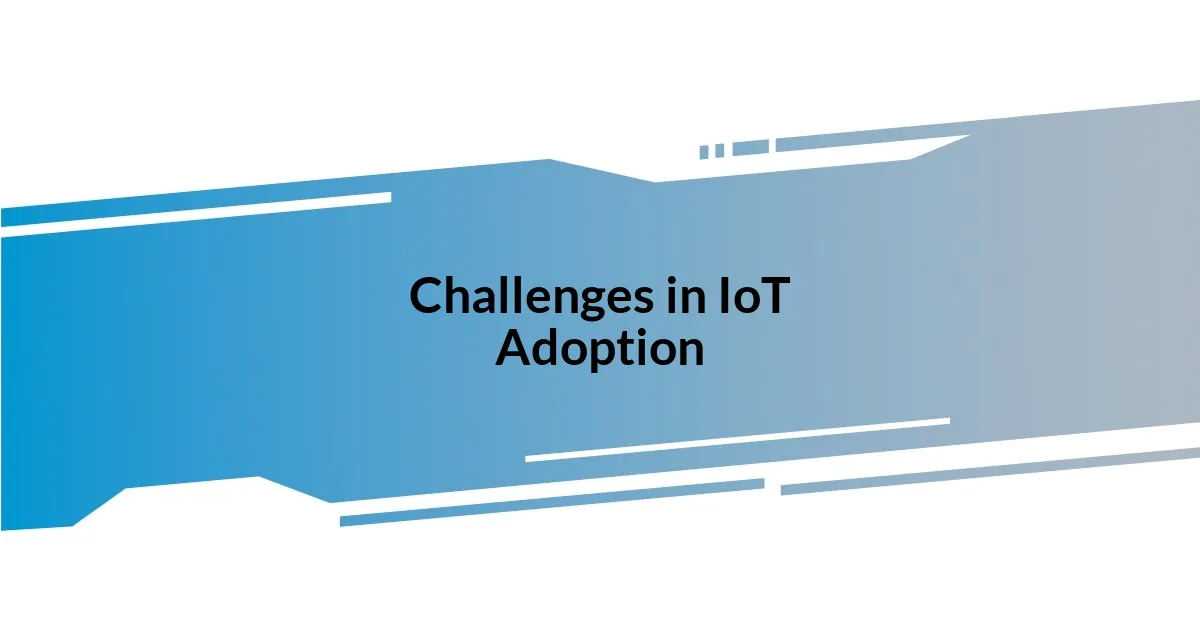
Challenges in IoT Adoption
As organizations consider IoT adoption, they often confront significant barriers, one of the most pressing being cybersecurity. From my perspective, the vast network of connected devices creates multiple entry points for potential cyberattacks. I’ve spoken with many energy managers who experience a mix of fear and frustration over securing their systems while still harnessing the benefits of real-time data.
Another challenge is the interoperability of devices. I’ve seen firsthand how different brands and systems can struggle to communicate with each other, which can cause headaches when trying to implement a cohesive IoT solution. It makes me wonder, how can companies ensure that their investments in technology actually work together for seamless energy management? My experience suggests that standardizing protocols and choosing compatible systems significantly alleviates this issue.
Lastly, the skills gap in the workforce cannot be overlooked. I recall chatting with a facility manager who was excited about adopting IoT but was equally concerned about training his team. It’s easy to underestimate the complexity that comes with new technology. This reality raises an important question: how do organizations equip their workforce to handle these advanced systems? I firmly believe a robust training plan can bridge this gap, opening doors for smoother transitions and better outcomes in energy efficiency initiatives.
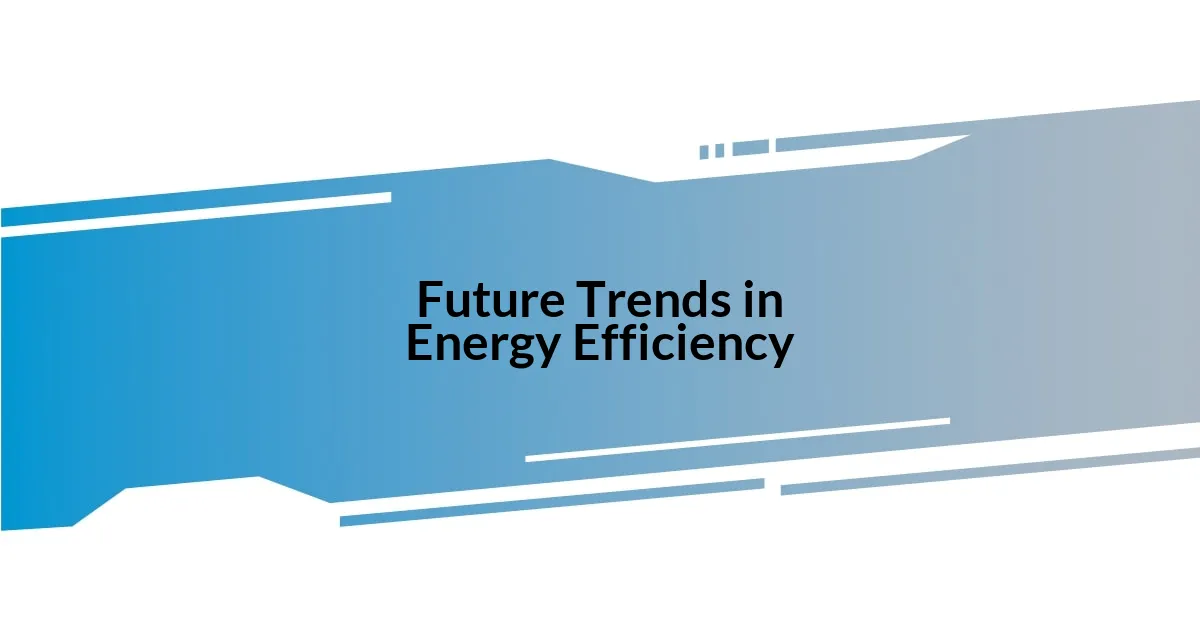
Future Trends in Energy Efficiency
Future trends in energy efficiency are brimming with potential, especially as smart cities continue to emerge. I remember the excitement I felt during a recent visit to a city where streetlights automatically adjust their brightness based on pedestrian traffic. It made me realize just how impactful intelligent infrastructure can be in conserving energy while enhancing community safety. With the integration of AI and machine learning, we can expect systems that not only monitor energy usage but actively predict and optimize it—significantly reducing waste.
Another noteworthy trend is the rise of decentralized energy resources, such as solar panels and battery storage systems. I once spoke to a homeowner who installed a solar setup and, through an IoT application, could track their energy production in real time. Watching her energy costs plummet while contributing to a greener environment was exhilarating. These technologies are empowering individuals to take control of their energy consumption and move toward sustainability. How often have we considered our energy choices on a personal level? This shift toward localized, renewable energy sources truly transforms our relationship with consumption.
Lastly, the future of energy efficiency will likely see advancements in building automation systems. These systems will become more intuitive, learning from user patterns to optimize heating, cooling, and lighting. I still remember the first time I walked into a building that automatically adjusted its climate control settings based on occupancy data. It was a game-changer! Imagine a world where our living and working spaces are not only energy-efficient but also tailored to our daily habits. This personalization can create environments that are not just sustainable but also enhance our comfort and productivity.